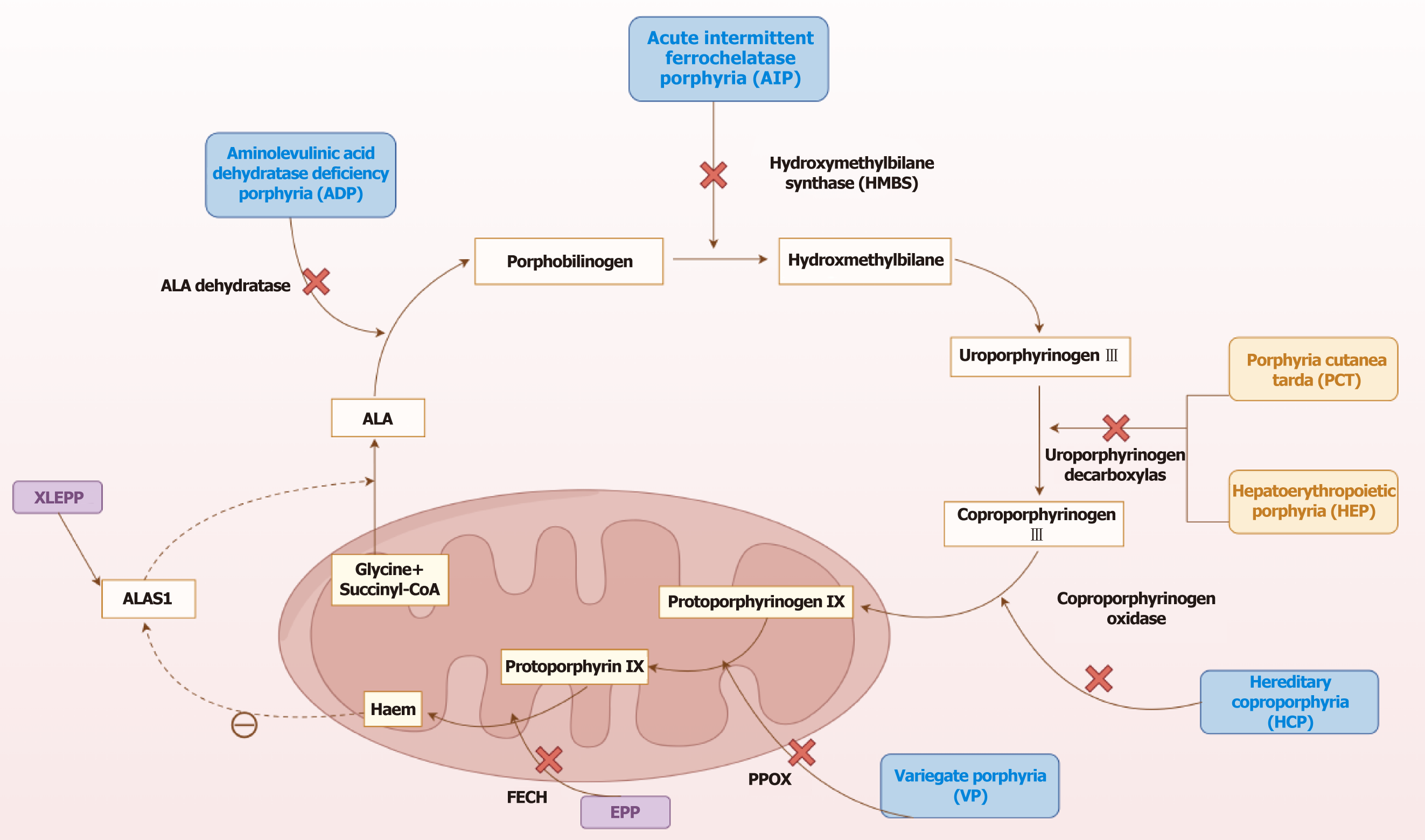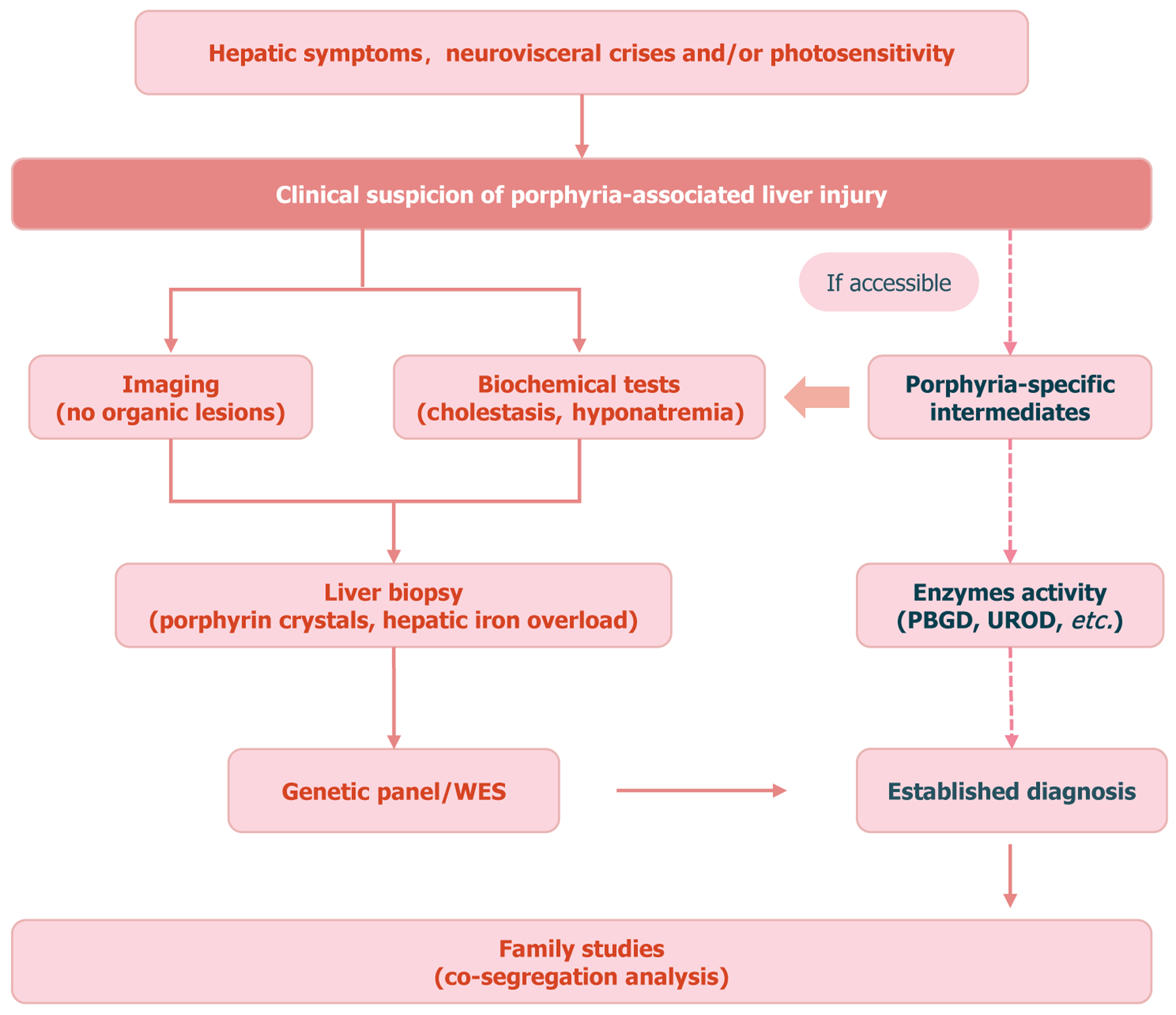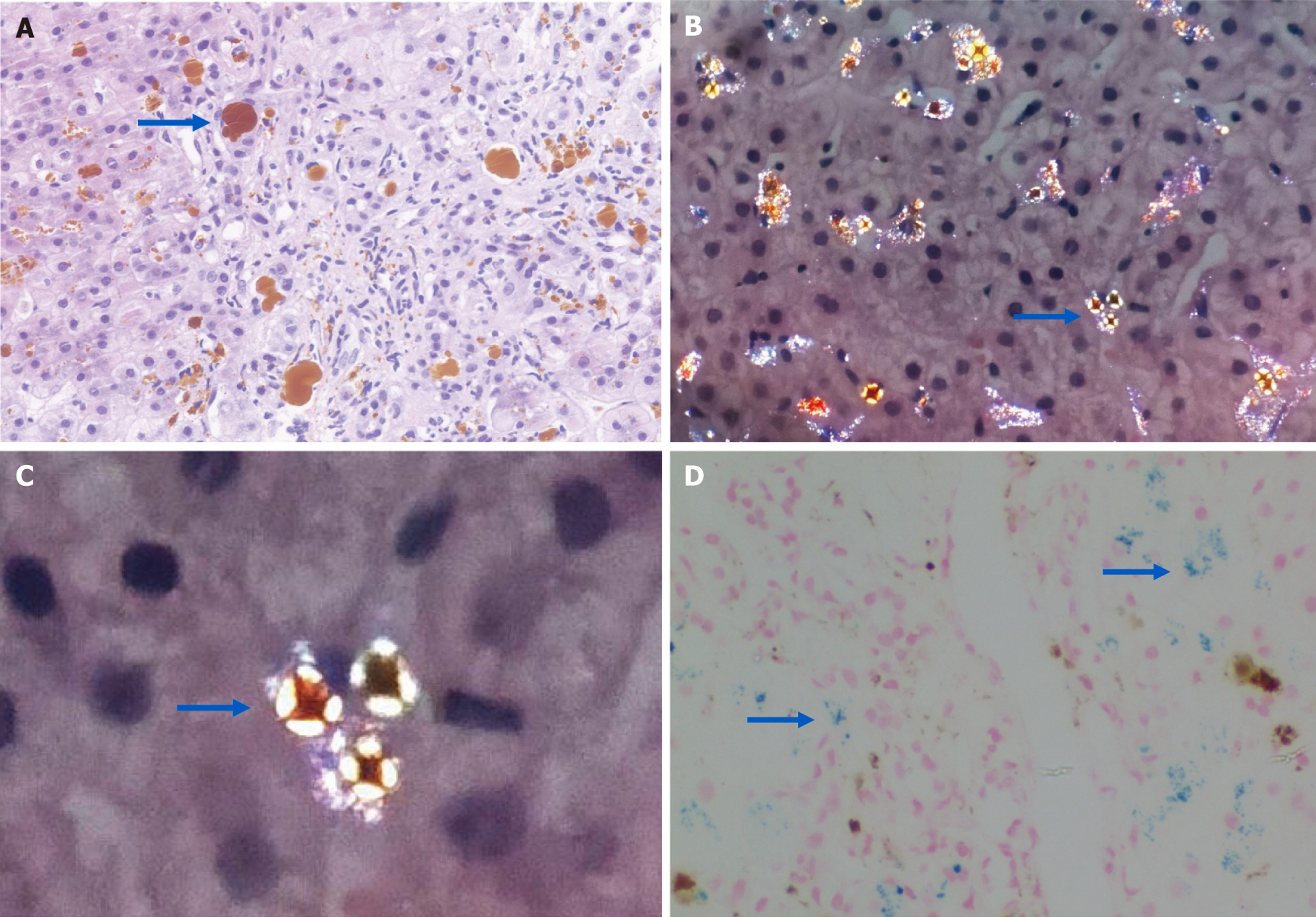Copyright
©The Author(s) 2025.
World J Hepatol. Sep 27, 2025; 17(9): 107705
Published online Sep 27, 2025. doi: 10.4254/wjh.v17.i9.107705
Published online Sep 27, 2025. doi: 10.4254/wjh.v17.i9.107705
Figure 1 Metabolic pathway of porphyrias and associated disorders: Key enzymes.
Intermediates and disease subtypes. ALA: Δ-aminolevulinic acid; AIP: Acute intermittent porphyria; ADP: Δ-aminolevulinic acid dehydratase deficiency porphyria; EPP: Erythropoietic protoporphyria; VP: Variegate porphyria; PCT: Porphyria cutanea tarda; HEP: Hepatoerythropoietic porphyria; HCP: Hereditary coproporphyria. This figure was created using FigDraw (Supplementary material; www.figdraw.com).
Figure 2 Diagnostic algorithm for porphyria-related liver injury.
WES: Whole exome sequencing; PPBGD: Porphobilinogen deaminase; UROD: Uroporphyrinogen decarboxylase.
Figure 3 Histopathological features of protoporphyria-associated liver injury.
A: Hematoxylin and eosin staining shows brown-yellow protoporphyrin deposits within canaliculi and hepatocytes; B and C: Polarized light microscopy reveals Maltese cross-shaped birefringent crystals (blue arrows), indicative of protoporphyrin aggregation; D: Prussian blue staining highlights granular iron deposits (blue arrows).
- Citation: Zeng T, Huang SY, Chen JN, Pang JH, Chong YT, Li XH. Pathogenesis and clinical management of liver damage in porphyrias: Mechanisms and therapeutic approaches. World J Hepatol 2025; 17(9): 107705
- URL: https://www.wjgnet.com/1948-5182/full/v17/i9/107705.htm
- DOI: https://dx.doi.org/10.4254/wjh.v17.i9.107705















